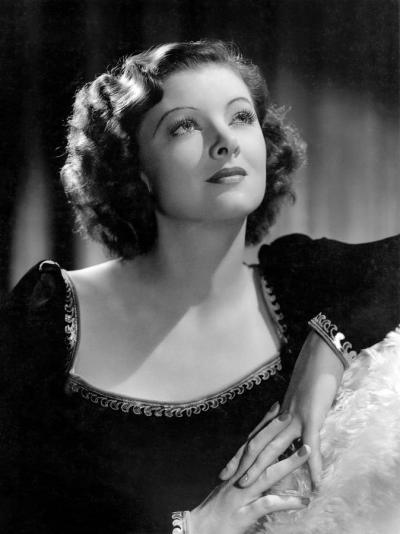
In 1947, Myrna Loy sued the Hollywood Reporter for $1 million.
The charge was an accusation printed in the then right-wing paper that Loy was a Communist, an accusation fueled in part by the actress having been vocal and active in left-wing politics since the 1930s. In addition, Loy’s role in William Wyler’s 1946 film The Best Years of Our Lives had implicated her in the United States’ growing anti-Communist fervor that was threatening livelihoods in Hollywood and beyond.
After Loy brought suit against the Hollywood Reporter, the paper was forced to print a retraction, but Loy didn’t stop there. She sent off a missive to the House Un-American Activities Committee, the governmental body investigating alleged Communist infiltration into the United States, that had subpoenaed many of her colleagues in the entertainment industry. The message read simply “I DARE YOU TO CALL ME TO TESTIFY.”
They didn’t dare, and Loy was left alone from then on.
Such was the dynamism of Myrna Loy. Born on August 2, 1905, from her earliest days in Radersburg, Montana where she was born Myrna Williams, she was surrounded by passionate left-wing personalities and progressive politics. After her mother moved the family to Los Angeles following the death of Myrna’s father, the young girl became involved in the film industry when Cecil B. DeMille found her dancing at Grauman’s Chinese Theatre and cast her in a small role in The Ten Commandments. Her career was rocky at first, but by the late 1920s and with the help of a name change, Myrna Loy became an established star. As she became familiar with the Hollywood landscape, she noticed the inequality afforded to black actors in Hollywood, and began to advocate for their rights within the industry. At one point, she approached her bosses at MGM with the issue. “Why does every Negro in a film have to play a servant?” she asked. “How about just a black person walking up the steps of a courthouse with a briefcase?”

An early portrait of Myrna Loy.
In 1932, Loy was active in the election campaign of Franklin D. Roosevelt, and remained a champion of his ABC programs throughout his presidency. Onscreen, she became known as the witty and intelligent Nora Charles in The Thin Man series and her screen image quickly became that of the “perfect wife.” But Loy never identified with that characterization and spent her time offscreen tirelessly advocating for the New Deal. She never personally met Roosevelt, something she deeply regretted, though she made many trips to the White House and developed a close and lasting friendship with Eleanor Roosevelt. In later life, faced with Reagan’s election and the undoing of much of Roosevelt’s legacy, she wrote in her autobiography, Being and Becoming: “Can you imagine how all of us who worked for years with Mrs. Roosevelt and her socialist programs feel now, to see them wiped off the map?”
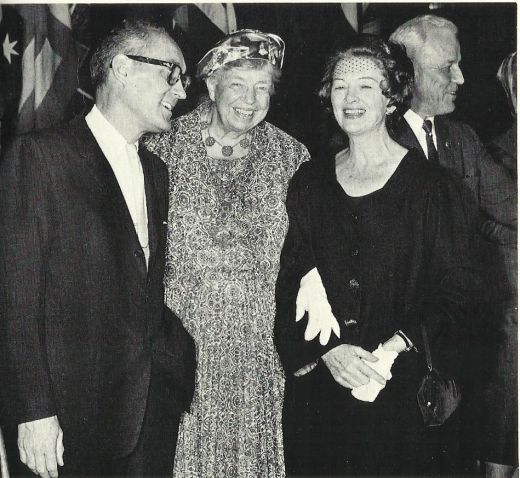
Later in life, with Eleanor Roosevelt.
Loy invoked the ire of Adolf Hitler by speaking out publicly against him in 1938, to the point that Hitler banned all her movies in Germany. Between 1941 and 1945, she worked full time for the Red Cross, entertained the troops, appeared at war bond rallies, and essentially retired from Hollywood. Loy only made one movie during the war period–The Thin Man Goes Home. She continued to work with the Roosevelts on reforms, and in 1945 Loy was invited to the meeting to ratify the United Nations Charter in San Francisco.
The following year was an important one for her–she went back to working regularly after her wartime hiatus and made The Best Years of Our Lives, considered to be one of the greatest films of the 1940s and also the impetus for the Hollywood Reporter to accuse her of communism. Managing to stave off those accusations, that same year, she was appointed to UNESCO, the United Nations department of culture, as the US ambassador. Over the next few years she became increasingly involved, attending conferences all over the world and representing UNESCO on official radio programs, then also signing on with the American Association for the United Nations where she spoke at conferences on behalf of women’s rights.
By the time the 1960s rolled around, Loy had been working with UNESCO for more than a decade. She had managed to balance her career in Hollywood with her political work, and begin a new chapter of her career on the stage while at the same time throwing her support behind Adlai Stevenson in his presidential campaigns. When Stevenson didn’t run in 1960, Loy worked hard to stump for Kennedy. During the Kennedy campaign, he invited her to be part of his Conference on Constitutional Rights and American Freedom, where she met Hubert Humphrey and immediately befriended him. After Kennedy’s election, her closeness with Humphrey led to Loy’s involvement with the National Council Against Discrimination in Housing, where she worked throughout the Civil Rights Movement.

Being interviewed at the UN, 1950.
Loy made huge strides in the organization. She found that though President Kennedy had signed the Housing Act of 1961, “we had uncovered massive evidence that eighty percent of federally sponsored housing was operated on a segregated basis.” Though Kennedy was never able to fulfill the promises of the Housing Act, Loy’s work led directly to Lyndon B. Johnson addressing the matter in the Civil Rights Act of 1968.
Having finally seen some measure of success in the fight against housing discrimination, 1968 saw Loy back in Hollywood to make April Fools, and also to fight for Eugene McCarthy’s campaign. She was unable to make the Democratic National Convention because of work, but she had fought hard for his nomination, especially in Oregon. She wrote: “I flew into every nook and cranny of Oregon…I shared so many meals with so many civic groups and political organizations that Eleanor Roosevelt’s wistful complaint haunted me: ‘I get so tired of all those chicken dinners.’” When Humphrey, her old friend who had gotten her involved in the NCDH, got the nomination, she found herself campaigning for him too. Not only because she liked him as a person, but also because she was worried about “the attack by Nixon and the Republicans on the judiciary.”
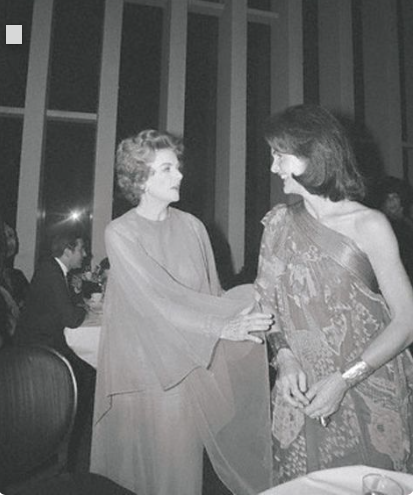
With Jacqueline Kennedy Onassis.
On the subject of the Vietnam War, Loy identified with the college students who protested against the war and considered herself to be getting “more radical” as she aged. She said that if work commitments with April Fools hadn’t prevented her from going to the 1968 Chicago Democratic National Convention, she surely would have been arrested along with the antiwar protesters outside.
As Loy reached her upper 70’s, she started to receive honors for her tremendous career onscreen. From time to time, reporters would also ask her about her political activities, and one such response from Loy in 1980 simply sums up Loy’s political philosophy: “Politics is part of my life…It’s everybody’s privilege to choose party, to be a part of government…and I’m seriously interested in solving our problems. Also, I believe in the U.N. It has seen some rough times, but it’s still surviving.”
Myrna Loy died at the age of 88 in 1993, but she was a political fighter to the end. As we live in these political tumultuous times, it is tempting to think what she would be doing today. We can be sure that she would be campaigning for the Democratic nominees, and vocally denouncing current White House policies on immigration and human rights. As an actress, she was among the best there was. But it was as an activist that Myrna Loy had her most lasting impact on the world, and I believe that it is as an activist she would like to be best remembered.
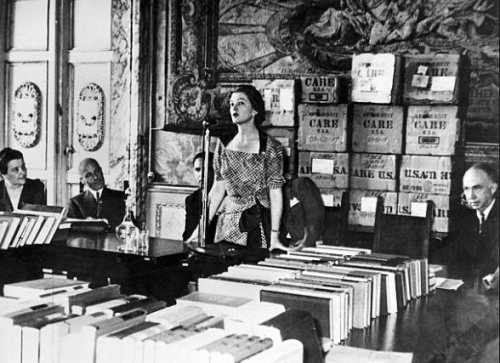
At a UNESCO conference in Florence, Italy.






















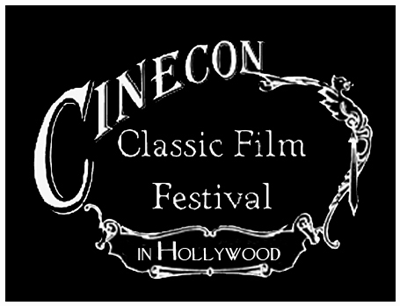




_03.jpg)


I think that she would smile at me for saying this: What a dame!!! 🙄
As I posted to FB, Wow! Terrific! She was amazing. I knew a little about this, but you have presented her beautifully. Doesn’t it make our appreciation of someone’s on screen talents all the greater when we know the brave stands they took personally when they had so much to lose?!!!
A great lady!I admire her very much.
Very informative .Thank you.
Makes me love her EVEN more, if that’s possible!
Fantastic. She really was remarkable.
I love Myrna Loy but I knew too little about this part of her life. Thanks for this fascinating article!
So glad I could help spread the good news! 😊
Congratulations on your CMBA!
This article is important, memorable, and deserves widespread recognition. As always, it is beautifully written.
– Caftan Woman
Thank you so much, Paddy, and many congrats to you too!
Great post, Lara!